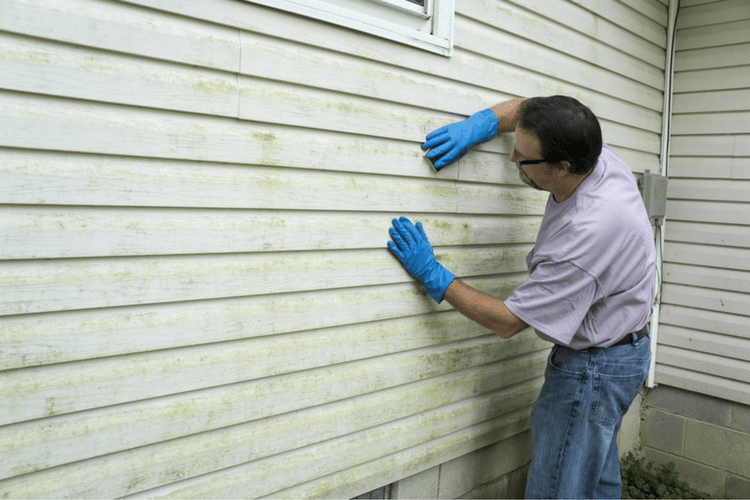It appears to make mildew vanish but on porous surfaces such as wood or vinyl siding chlorine evaporates too quickly to get to the fungi s roots guaranteeing regrowth.
Removing mold from fascia boards and siding.
Scrubbing the siding mold removal usually requires some scrubbing and the best tool to use is a stiff bristle natural fiber scrub brush.
Oxygen bleach hydrogen peroxide.
Dry the surface completely with a towel.
Less volatile than chlorine it removes mildew on and below the surface as well as algae dirt and oxidized paint but won t harm plants or clothing.
Add cup clorox regular bleach 2 with cloromax to 1 gallon water in the 5 gallon bucket.
Chlorine can also damage foliage and stain clothing.
Like fascia boards.
Scrub with moderate pressure being careful not to push too hard against the flexible vinyl which can break.
All types of siding can develop mildew and mold but wood and wood fiber siding can see the worst damage and may be subject to rot and decay if the mildew isn t removed.
Instead of putting dangerous.
Avoid metal fiber brushes they can damage the siding.
Add a teaspoon of soap to a spray bottle filled with water and shake it up.
If that doesn t work try using distilled white vinegar which kills more than 80 of mold species.
Whether it s mold or mildew your siding is no place to have things growing.
Pre wet the surface to be cleaned with water.
How to remove mold and mildew from house siding some simple cleaning solutions and a soft bristled brush can remove mold and mildew from your siding and protect your family and your home s value.
If you wash the house when the siding doesn t yet have mold or mildew growth you might be able to accomplish it using a garden spray attachment to your garden hose.
Black mold reappears even if treated with a biocide or fungicide once the area gets wet again.
Watch as lou manfredini ace s home expert shows you an easy and affordable way.
Protect larger plants by covering them with plastic sheeting.




























